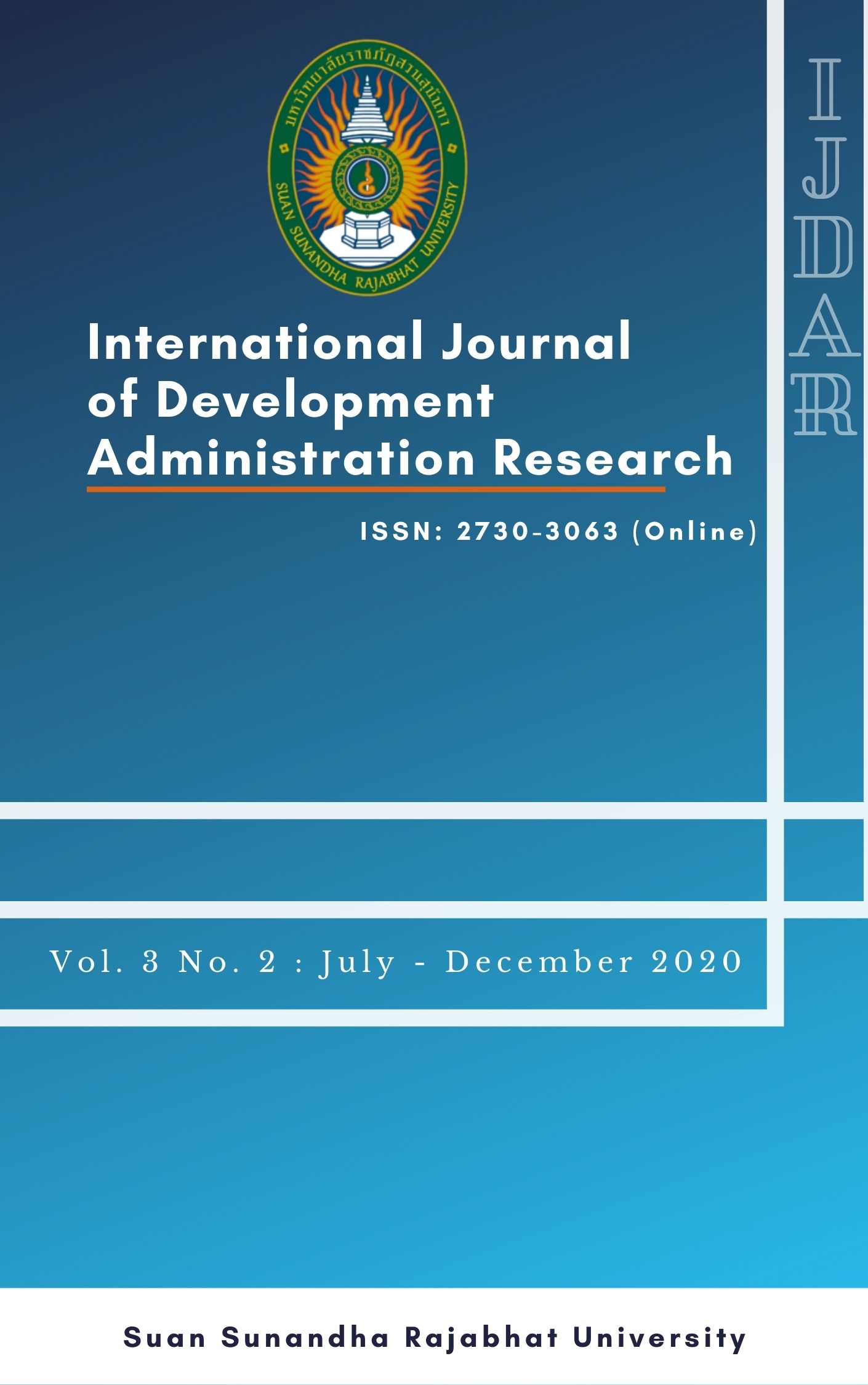Competitive Situation Analysis of the Current Tourism Management of the Floating Markets along the Tha Chin River Basin in Comparison with That of Other Nearby Floating Markets Using the Five Force Model and SWOT Analysis
Main Article Content
Abstract
This research aims to: 1) analyze the competitive situation of the current tourism management of the floating markets along the Tha Chin River Basin in comparison with that of other nearby floating markets using the Five Force Model; and 2) analyze strengths, weaknesses, opportunities, and threats of the tourism management of the floating markets along the Tha Chin River. This research employed qualitative research. Data were collected from 21 key informants consisted of executives of the government authorities and private organizations, stakeholders of 6 floating markets along the Tha Chin River, covering 4 provinces, and academics. In-depth interviews and a focus group discussion were used to collect the data. Research findings showed that: 1) in terms of the limitations of the Tha Chin River Basin, every floating market has its own uniqueness and local wisdom; as for the competitive intensity of these floating markets, it is found that tourists were very loyal to other markets; moreover, there were government policies that control the operation of the floating markets as well as a strict control on entrepreneurs in the area, making it difficult for new competitors to enter into the area; in terms of substitution, it is found that each floating market had its own specific complete substitution: and as for the bargaining power of the entrepreneurs, it is found that these floating markets had an opportunity to grow and expand in the future as a result of the enforcement of the civil state policy; and as for the bargaining power with tourists, it is found that the PR information provided to tourists were complete as a result of communicative innovations; 2) in terms of the strengths, there are efficient waste management and the systems for maintaining and conserving natural and environment in the areas whereas the threats include lack of the development approach to add value to the products as well as a management system to handle the tourism products in the value chain; for the opportunities, it is found that there are new trends seem to emerge continuously, causing changes in many things in this new world; and lastly for the threats, there are conflicts in terms of politics and religions in many cities, communities, and public areas. These conflicts cause psychological impacts to tourists, making them postpone their decision to travel.


